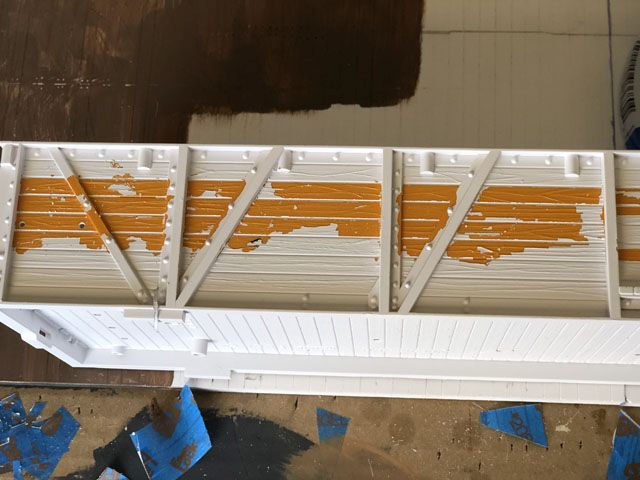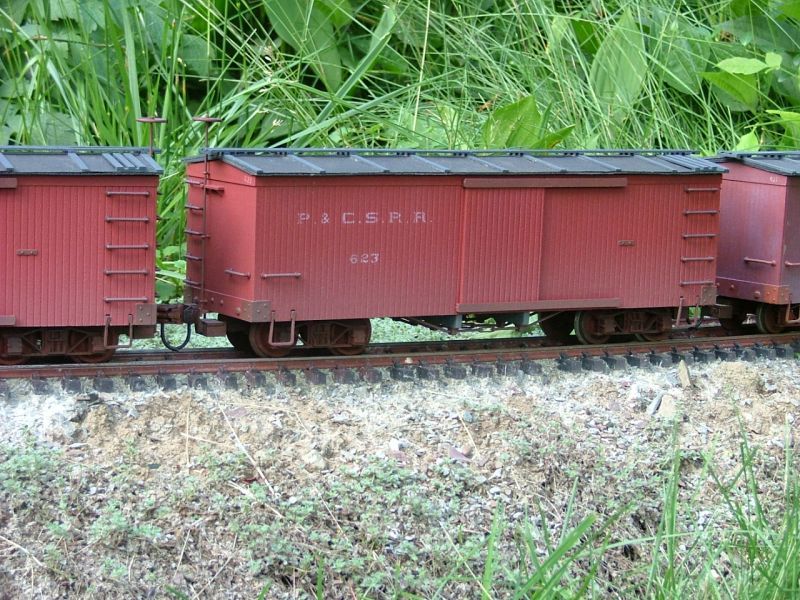Oh dear, Richard, getting that thing stripped is going to be a job.
And that brings up the paint stripping question …
Back to talking spray can primers:
I’ve never had something from LGB and whatever plastic is their favorite flavor, but have painted Bachmann, HLW, G scale trains, other scale trains, model rockets, wargame miniatures, and plastic models, in their various plastics, styrene, ABS, polycarbonate, polyester resin, and who knows what else. (but nothing in a spray can sticks reliably to those little 1/72, 1/76, OO/HO scale army guys from Airfix, they are polyethelyene or something like it)
My 3 favorite hardware store or automotive store spray can primers are, in no particular order: a white colored one from Rustoleum they call a Bonding Primer; good old cheap flat white enamel from Walmart’s store brand works surprisingly well for me, and both Krylon and Rustoleum have played well chemically on top of it; and, then, yes, it says “Filler Primer” but Duplicolor’s automotive primer in grey has worked well for me and gone on pleasantly thinly for something named “filler”.
Back to surface prep, sometime way back, late 1970s, early 1980s, I got started scrubbing models and miniatures with a soft tooth brush and things like Clorox’s Soft Scrub cleanser or other brand equivalents.
If I had the health and money I’d get a couple LGB cars to experiment on myself. (if I had the health and money there are a lot of things I get or do, but that’s a topic for another place and time)



